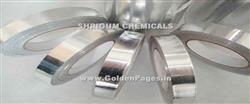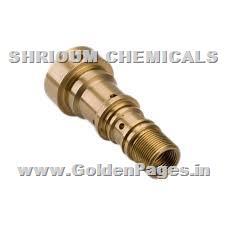SHRIOUM CHEMICALS
Featured Products
Highest quality standards are achieved through the implementations of latest technology, decades of experience and everlasting moral values , which have helped us to retain our customers as well as multiply them.
Welcome to SHRIOUM CHEMICALS
Pickling Chemical

Pickling or chemical descaling is one of several pretreatment steps available for preparing an article for further processing such as passivation or electropolishing, or to perform a superior cleaning operation of welded structures.
Prior to pickling, the heavy surface soils such as oil, grease, buffing compounds, drawing compounds, some scale, heavy rust, dye and paint markings, tape, adhesive residue and other foreign substances must be removed. This step may be accomplished by the use of alkaline cleaners, solvent cleaning, vapour degreasing, ultrasonic cleaning, steam cleaning, water-jetting, or other mechanical cleaning. Pre-cleaning is not required if oxide or scale is the only soil on the surface.
Corrosion & Pickling
Pickling is typically performed to remove tightly adherent oxide films resulting from hot-forming, heat treating, welding and other high temperature operations. Welding or heat treatment often produces complex oxides that can vary in color. All these oxides are generally referred to as "scale" and must be removed. This is Precursor step to passivation.
Where applicable, alternative mechanical methods such as blasting, shot peening, tumbling, and wheel abrading may also be performed. Abrasives containing iron should not be used. In many cases, pickling of stainless steels is performed in two steps, one for softening the scale and one for final scale removal. Over-pickling, under-pickling and pitting usually are the direct results of lack of control over process variables including acid concentrations, solution temperature and contact time. We design pickling products to achieve safety from this.
Passivation
Surface Cleaning, Chemical Cleaning , Degreasing
This Stage allows Pickling and passivation chemicals to come in contact with metal surface which has to passivate.
Pickling Process
This stage allows to itch metal surface uniformly, which is controlled itching. In this stage metal surface get activated uniformly. Should remove all sorts of contaminants including free ferrite and all sorts of scales
Passivation Process
This stage eliminates corrosion susceptibility of surface of the metals creating uniform passive layer Chemical surface conversion takes place. Surface become passive for further air - oxidation
Confirmation of Passivation ( Passivation Tests )
At this stage the passivation effectiveness must be confirmed by one or more specified test practices to qualify for certification. In case of S.S. with standard qualified tests ASTM A967-01e1 10-Oct-2001, Third party specification tests or DIN / IS / BS
Our Vision
* To embrace new technologies and methods. * To give unsurpassed products and services to the clients. * To constantly look for improvement and changes.









